

Max Davies
2026 Toyota HiAce review
2 Hours Ago
The Peugeot 3008 GT Sport PHEV has plenty to offer, but it's a classic 'jack of all trades, master of none' in the real world.
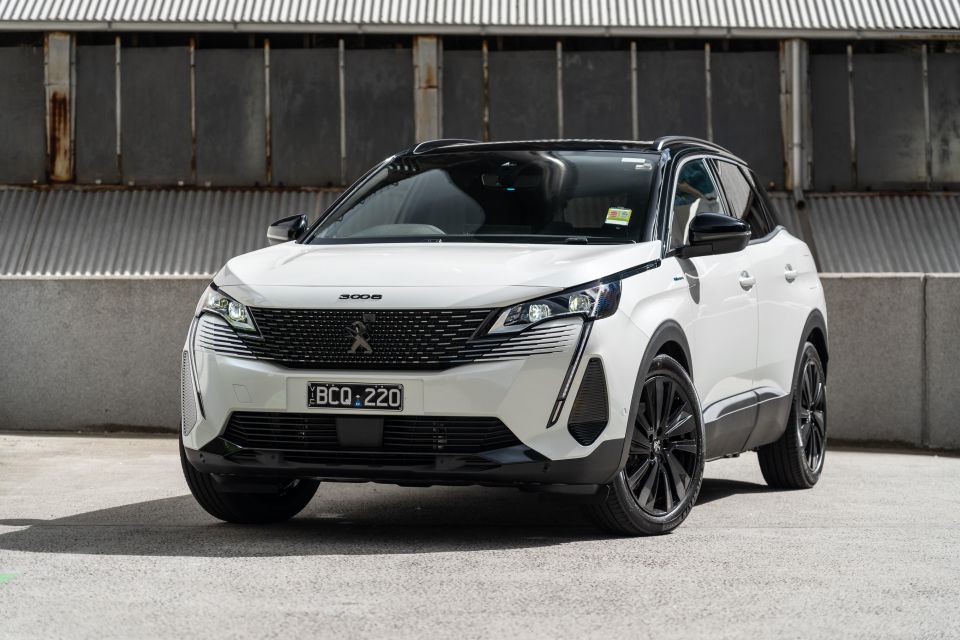


Quickly see how this car stacks up against its competition. Select any benchmark to see more details.
Where expert car reviews meet expert car buying – CarExpert gives you trusted advice, personalised service and real savings on your next new car.
Peugeot is finally going electric-ish in Australia.
Although we’re still waiting for the all-electric e-2008 SUV, the French brand is launching two plug-in hybrids Down Under in 2022.
Neither is likely to be a huge seller but, of the two, the 3008 GT Sport PHEV on test here is likely to be a bigger seller. After all, the 3008 SUV was comfortably the best-selling Peugeot in Australia last year, and it’s dropping into a part of the market that’s rapidly getting more crowded.

On paper, this French fancy has a fighting chance. Its dual-motor all-wheel drive setup delivers competitive electric range, and straight-line performance is impressive. The 3008 has always been a pretty thing, and the GT Sport is no different.
The price looms large, though. At just under $80,000 before on-road costs – or around $90,000 on the road – the 3008 PHEV is the most expensive Peugeot you can buy in Australia, and is deep in territory occupied by BMW, Audi, and Mercedes-Benz.
Does this plug-in hybrid have what it takes?
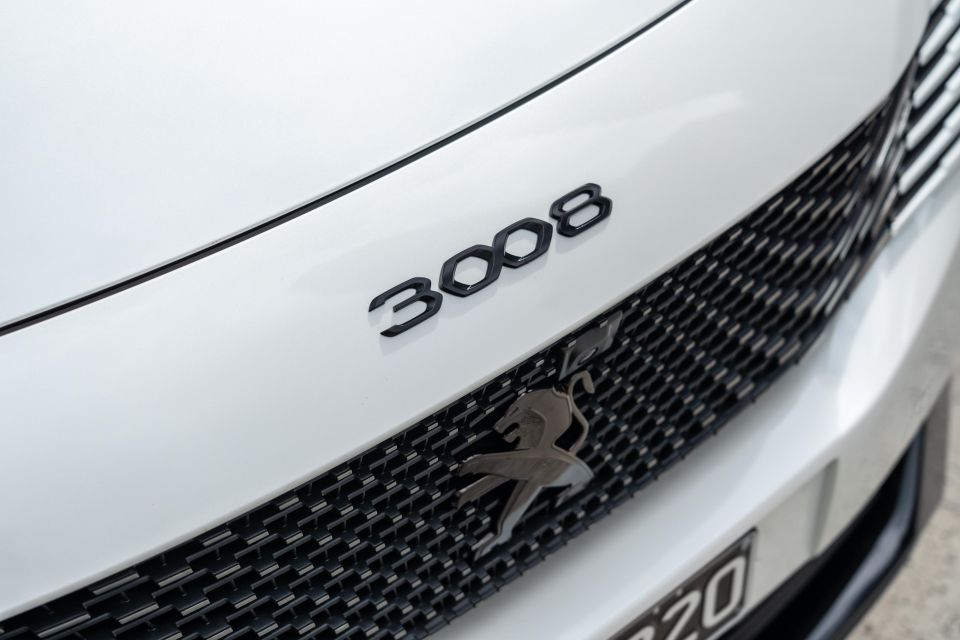
Deep breath… The 3008 GT Sport PHEV is $79,990 before on-road costs in Australia, making it significantly more expensive than the Mitsubishi Outlander PHEV, upcoming Ford Escape PHEV, and MG HS PHEV.
It’s priced in line with the seven-seat Kia Sorento GT-Line PHEV.
The 3008 PHEV is a whopping $20,150 more expensive than the petrol-powered 3008 GT Sport, and $3000 pricier than the other PHEV in the Peugeot range; the 508 GT Fastback Plug-in Hybrid.
No matter which way you look at it, that’s a lot of money. Along with its mid-sized plug-in hybrid competition, that price puts the Peugeot head-to-head with the Hyundai Ioniq 5 and Kia EV6, along with the Volvo XC40 Recharge Pure Electric.
While the leap to pure-electric power isn’t for everyone, the 3008 PHEV isn’t the most eco-friendly or forward-looking car you can buy for that sort of money.
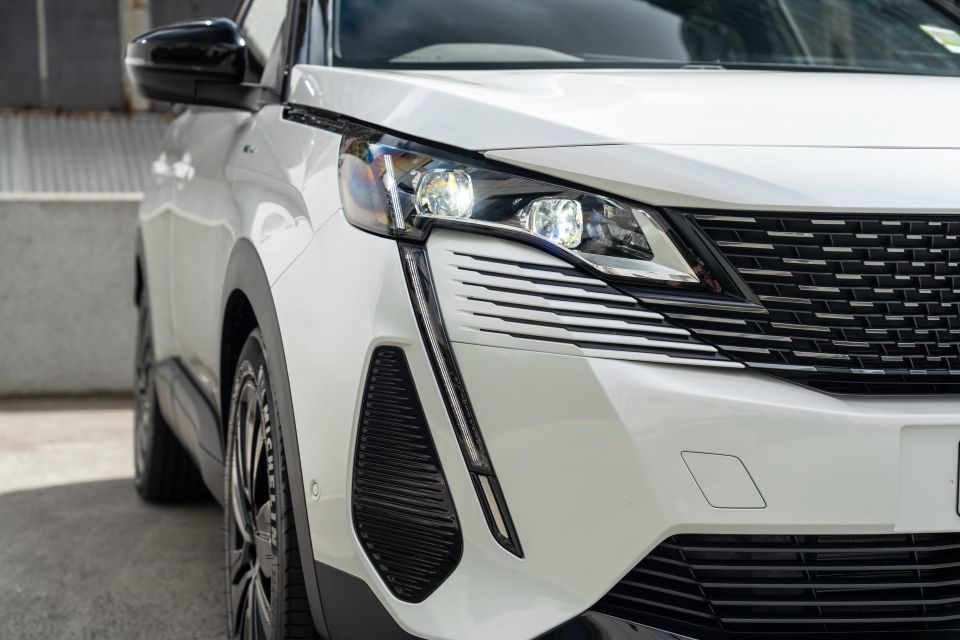
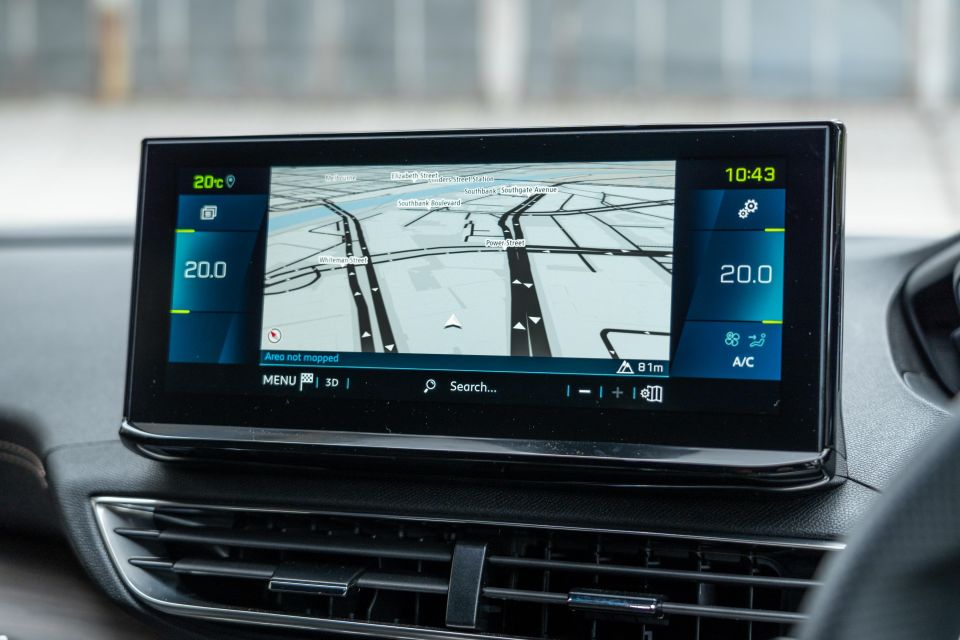
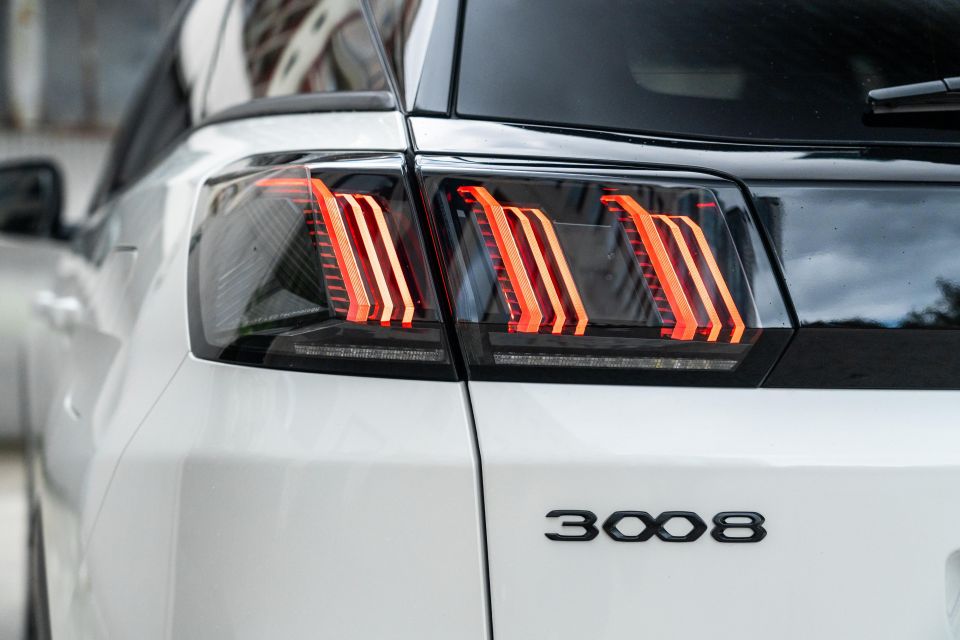
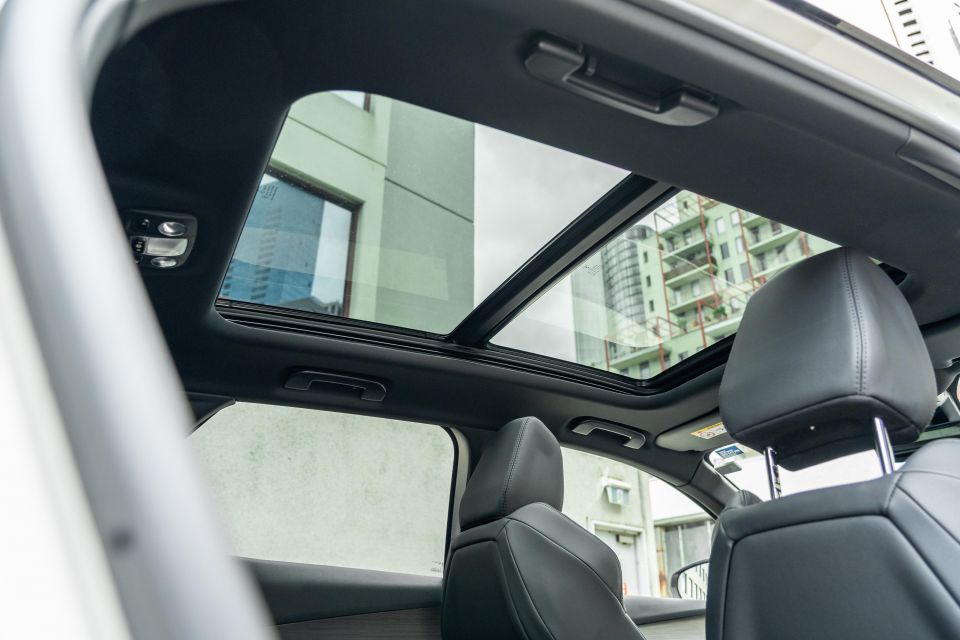
Buy your new car without the stress. It's fast, simple and completely free.

Great service from Travis and team, second time I have used this business would not hesitate to recommend them to anyone
Craig C.
Purchased a Ford Ranger in Sunshine Coast, QLD
CarExpert helped Craig save thousands on his Ford Ranger, now let us save you on your next new car.
Find a deal3008 GT Sport Plug-In Hybrid AWD highlights:
That comes atop the following kit standard elsewhere in the Peugeot 3008 range:
**UPDATE 5/5/22: Peugeot Australia has advised that the Focal premium audio system in various models, including the 3008 GT Sport, due to a manufacturing irregularity that impacts MY22 models.
“Peugeot Australia is working closely with Stellantis to identify when the FOCAL premium audio system will be reintroduced to the impacted models,” the company said in a statement.

The 3008 has a five-star ANCAP safety rating based on testing conducted in 2016.
It received an adult occupant protection score of 86 per cent, child occupant protection of 85 per cent, pedestrian protection of 67 per cent and safety assist of 58 per cent.
The 3008’s list of standard safety equipment includes:
Unlike lower-spec petrol models, the GT Sport also has stop/go and active lane centring to go with its adaptive cruise control. In the Peugeot world, these functions are only offered with an eight-speed automatic transmission.
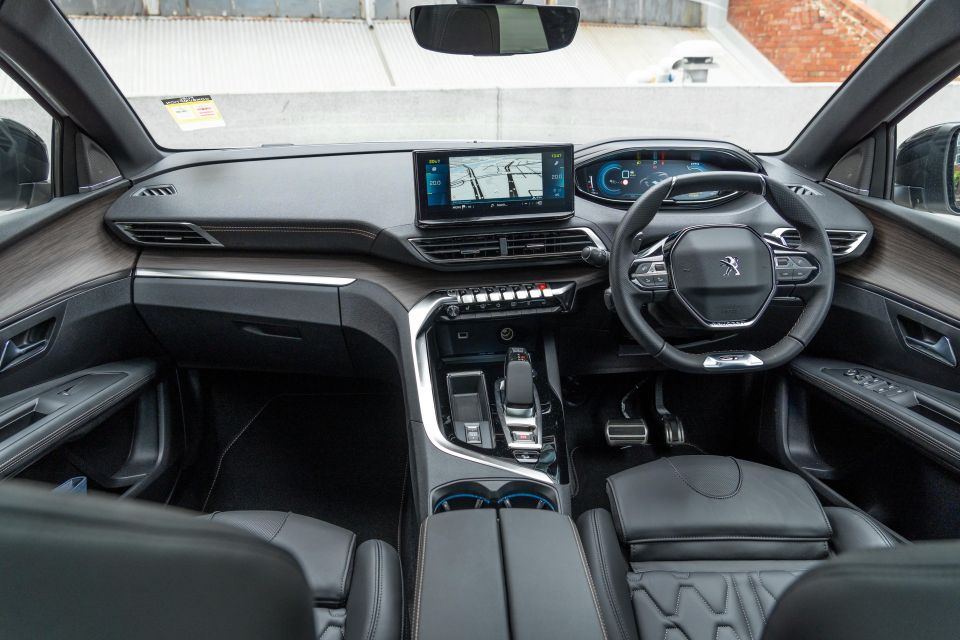
There’s very little to separate the PHEV from the wider 3008 range inside, which is no bad thing. It’s an interesting, well fitted-out cabin.
The seats are trimmed in lovely Nappa leather, and offer plenty of support on long drives thanks to their extending under-thigh section and generous bolstering. The front seats are heated, and the driver gets a massage function which, although a bit fiddly to activate, feels properly premium.
It’s a shame the passenger seat is manually adjusted, given the rest of the cabin feels so premium.


Technology has traditionally been a weak spot for Peugeot, and the 3008 PHEV does nothing to change that. If anything the holes in its technology suite are more pronounced, given the $80,000 sticker price.
A 10.0-inch infotainment screen sits proud of the dashboard, and is backed by a minimalist row of piano-style keys to jump from function-to-function. It’s all very pretty, but the screen is frustrating to use at best, or slow and obtrusive at worst.
Calling it a 10.0-inch screen feels a bit misleading, given the sides are permanently blocked out to show the climate control status… but don’t allow you to change the temperature or fan speed without diving into another menu.
There are too many layers to it, and jumping between them is slower than it should be in the smartphone age. Don’t get us started on the grainy reversing camera or Peugeot’s ropey surround-view setup, either.
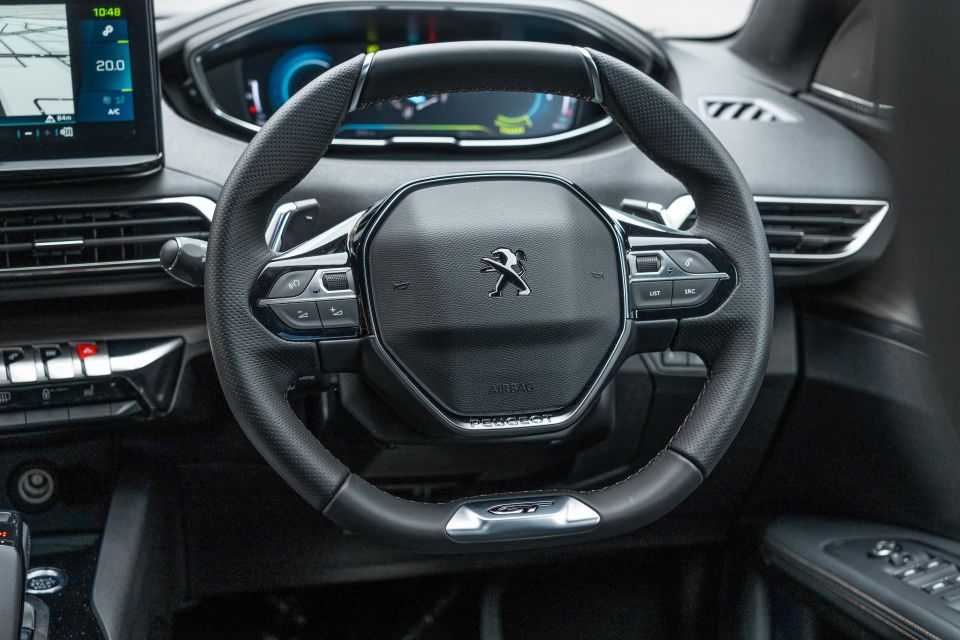

The high-set 12.3-inch driver display is very pretty, and feels perfectly in keeping with the rest of the interior design. It’s definitely the high point in the 3008 cabin, and features a range of interesting graphics to show what’s happening with the hybrid system.
The low-set, tiny steering wheel isn’t to everyone’s liking, but it works for my driving position. It takes some adjustment using what feels like a gaming wheel in a mid-sized SUV, but you quickly tune in to what’s required.
There’s plenty of storage scattered around, including a deep bin beneath the central armrest, wireless charging slot at the base of the dashboard, dual cupholders, and door pockets. The glovebox is tiny though, because the fuse box eats into it.
There’s only one USB-A port up front, although there are two more for rear passengers.
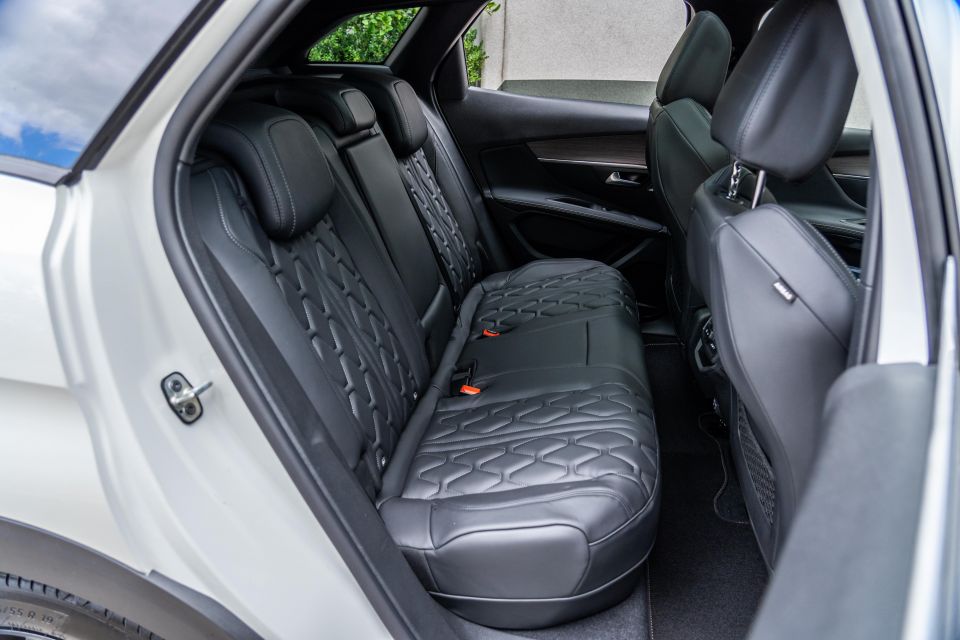
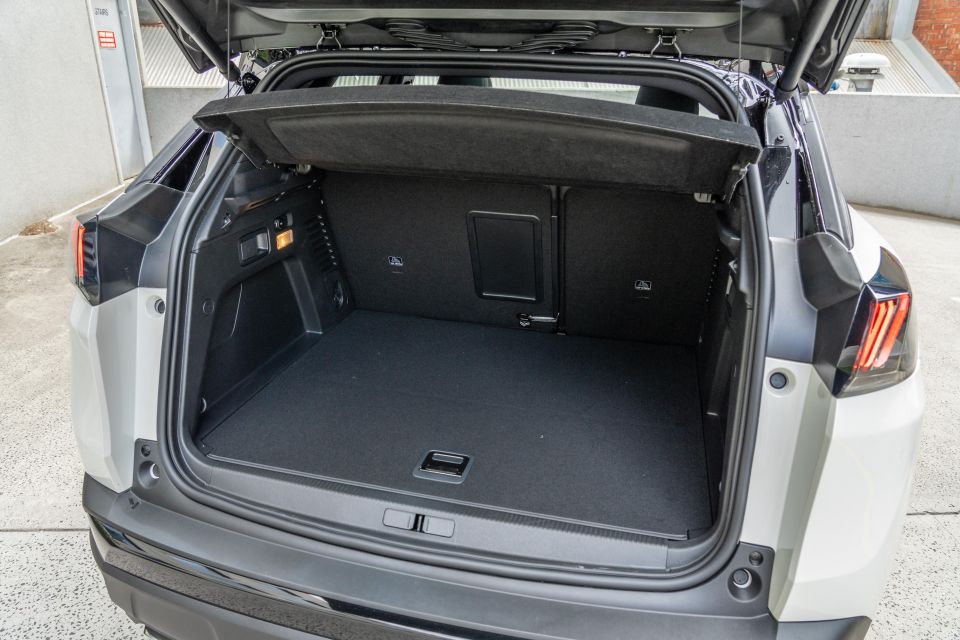
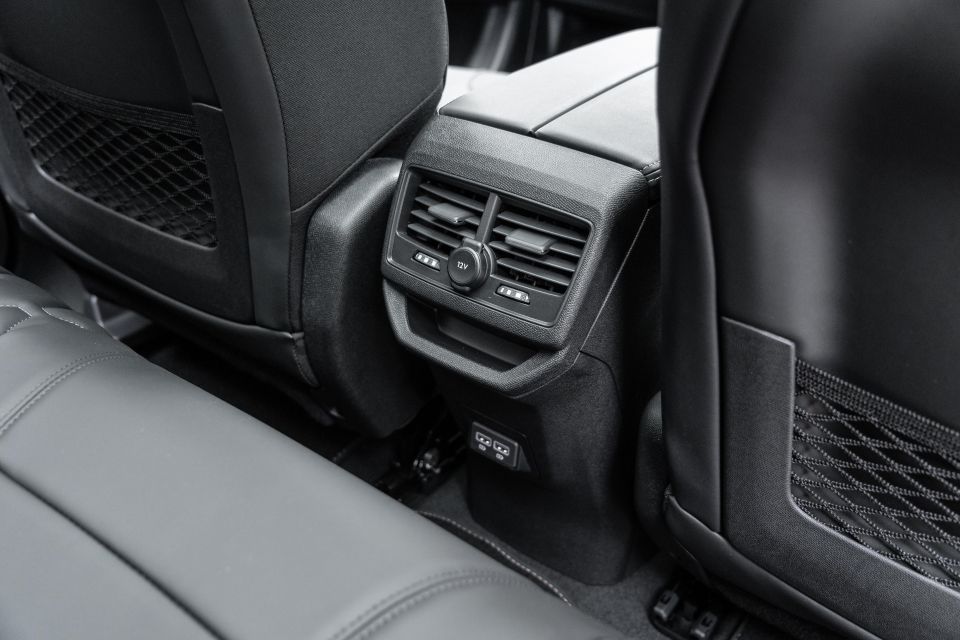
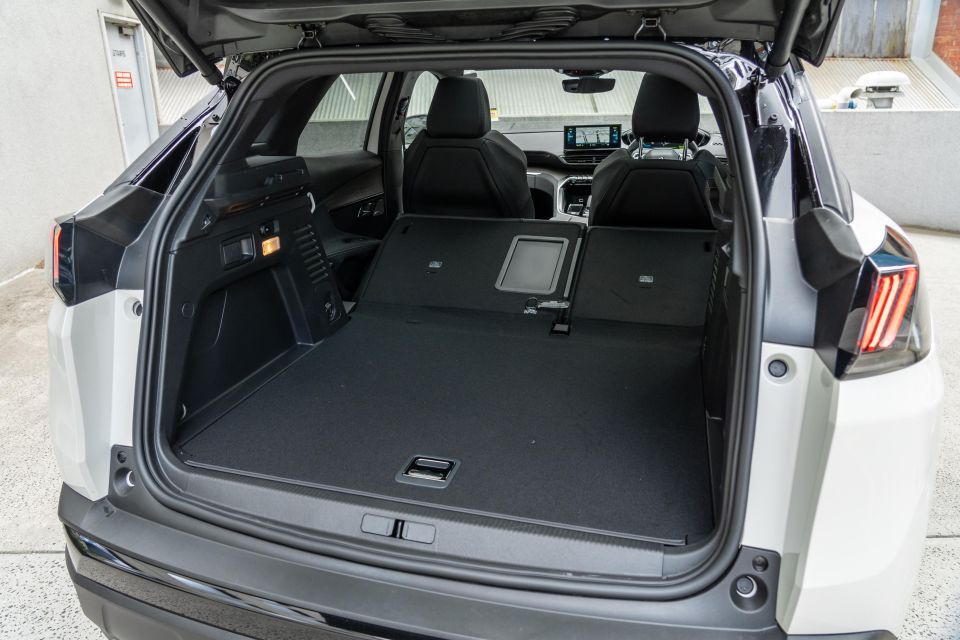
Rear seat space is limited compared to most mid-sized SUVs. The pinched roofline and slim windows make the back of the 3008 feel claustrophobic, and legroom behind adults is tight. Headroom in every 3008 is tight, but the panoramic glass roof in the GT Sport makes it especially bad.
There are air vents back there, USB ports, and a fold-down central armrest, and three ISOFIX and two-top tether points are available for child seats.
Boot space is 529L with the rear seats in place, and a capacious 1608L with them folded. It’s not the biggest boot in the mid-sized SUV world, but you’ll get a set of golf clubs back there without too much stress.
It’ll easily swallow the weekly shop, provided you remove the chunky bag housing the charge cable. Put it somewhere safe.
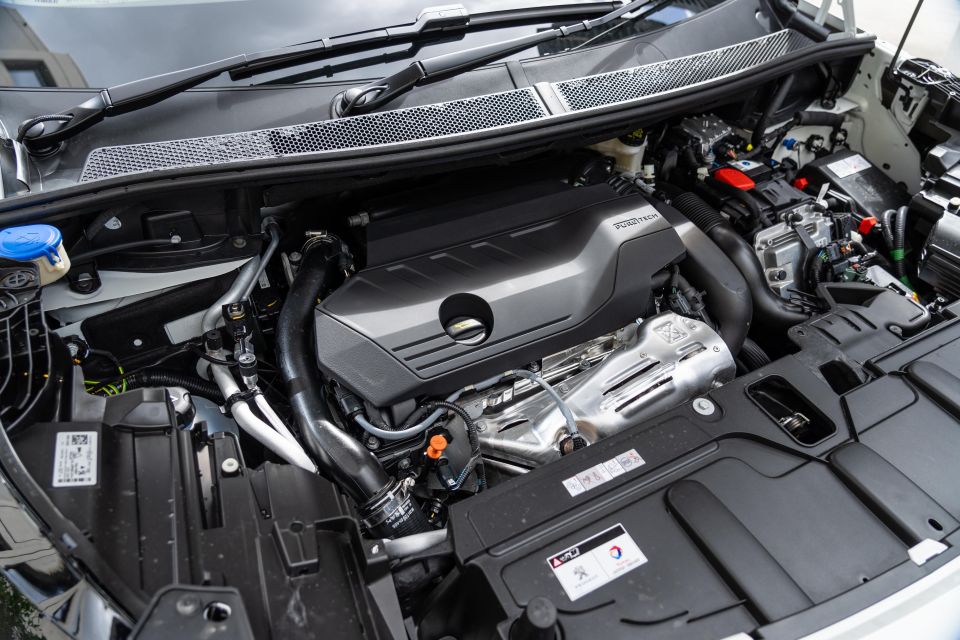
Power in the 3008 PHEV comes from a 147kW petrol engine paired with electric motors on each axle.
The front motor has 81kW, the rear one has 83kW, and the three power sources can combine to offer 222kW of power at once. Not only is the PHEV the most powerful option in the Peugeot 3008 range, it’s the only model with all-wheel drive. The three power sources work through an eight-speed automatic transmission.
Thanks to its 13.2kWh lithium-ion battery pack, the 3008 PHEV has a claimed 59km of electric range on the tougher WLTP test cycle and a claimed fuel economy figure of just 1.6 litres per 100km.
As is always the case, whether you’ll be able to match that depends on whether you’ve charged the battery. With a full battery, running in hybrid mode, we returned 1.0L/100km. The battery was good for just shy of 50km.
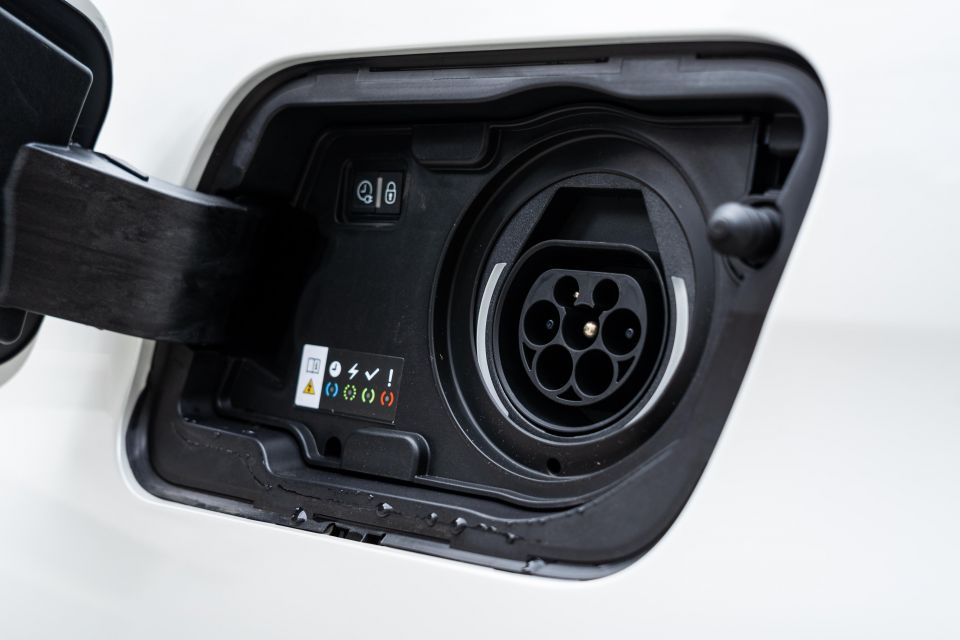
Once the battery was depleted, running in hybrid mode around the city, we returned 5.8L/100km. Using the engine to charge the battery on the highway saw consumption balloon out to 12.8L/100km.
Looking at things another way, based on our best-case scenario of 1.0L/100km, an average fuel price of $1.766 per litre, and an average mileage of 12,000km, the 3008 PHEV would cost you $211.92 to fuel for a year.
The petrol GT Sport has a best-case fuel consumption of 5.6L/100km and, using the same fuel price and annual mileage, would cost you $1186.75 to fuel for a year.
That means the PHEV could theoretically cut $974.83 from your annual fuel bill. Unfortunately, it’s also $20,150 more expensive than the GT Sport petrol, so you’d only recoup the savings during your 20th year of ownership.
Of course the PHEV is about more than just fuel economy; it offers better performance and refinement than the petrol, along with all-wheel drive. It just comes at a significant cost.
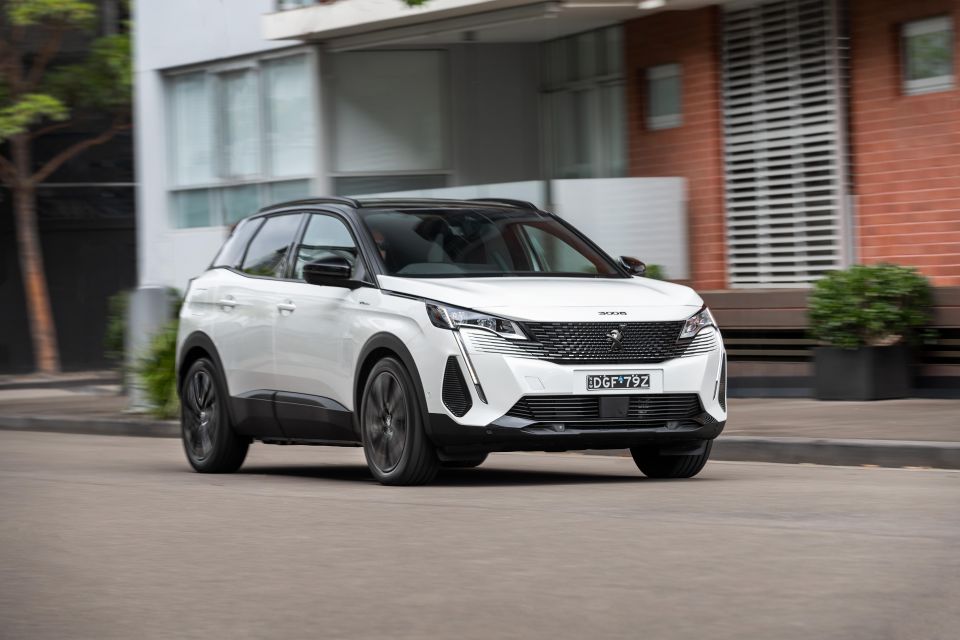
Peugeot has done a good job combining petrol and electric power in the 3008. It’s one of the smoothest, quietest PHEVs we’ve experienced.
When the battery is fully charged, the 3008 does an impressive electric car impersonation. Performance is strong when the petrol engine is turned off, and the motors don’t run out of puff at 40km/h.
It reliably ran on e-power up to around 80km/h, and even at 100km/h was capable of stints with no petrol intervention.
At 110km/h the petrol engine is doing all the heavy lifting, but it hums away quietly in eighth gear. You rarely feel the eight-speed automatic shuffling through the gears, even when you’re using the engine to charge the battery.

Although it occasionally fires up with a grumble, the petrol engine is generally smooth and quiet when it kicks in. In the default Hybrid Mode it kicks in if the lithium-ion battery pack is depleted, or when you bury the accelerator past the kickdown point.
Performance is impressive when both motors and the petrol engine are working together. Peugeot claims the PHEV AWD hits 100km/h in less than six seconds, and that feels accurate in the real world. Although you can prime the car by flicking into Sport mode, it’s generally pretty quick to give you maximum thrust from Hybrid mode.
Even when the lithium-ion battery pack is depleted, the petrol engine acts as a generator to make sure you can tap into smooth e-power at low speeds.
It acts like a slightly more capable Toyota hybrid, although it’s also thirstier than a RAV4 Hybrid when it’s doing that.
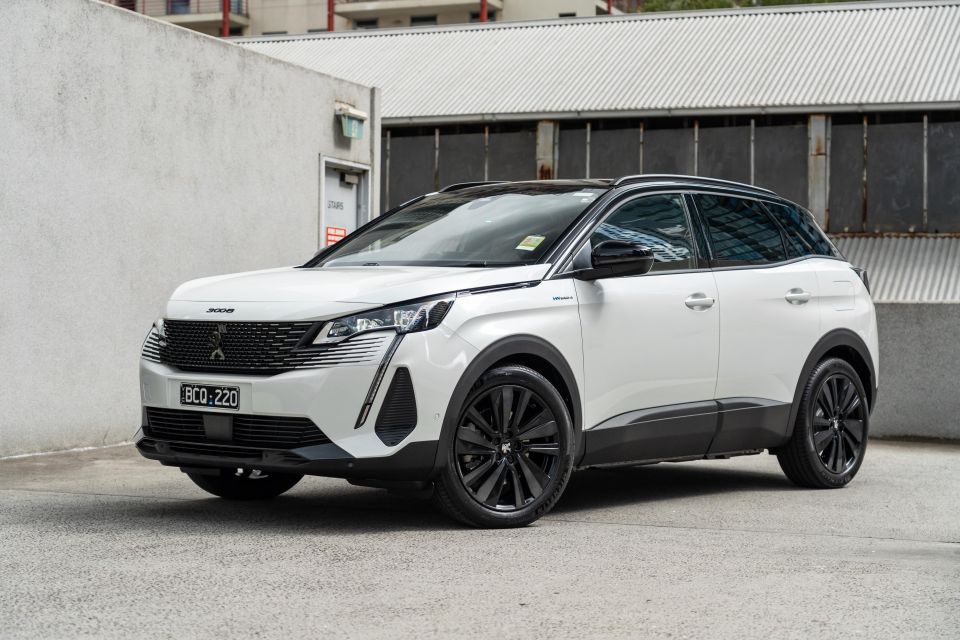
Where expert car reviews meet expert car buying – CarExpert gives you trusted advice, personalised service and real savings on your next new car.
The extra weight from the batteries and twin electric motors has taken its toll on the car’s ride and handling, though. Where the petrol-only GT Sport tips the scales at just 1397kg, the PHEV is a whopping 1815kg. It shows on the move.
Initially, the ride feels pretty good. Over small city bumps it has a similarly comfortable feeling to the GT Sport, but it clatters into sharp hits like potholes much harder, ruining the refined feeling from behind the wheel.
You get the sense the dampers aren’t quite up to the task of containing such a heavy car on the highway, too, where the 3008 takes one, two, or sometimes three movements to settle after crests or dips.
It’s smooth, and never feels out of control, but it’s abundantly clear this is a heavy car.
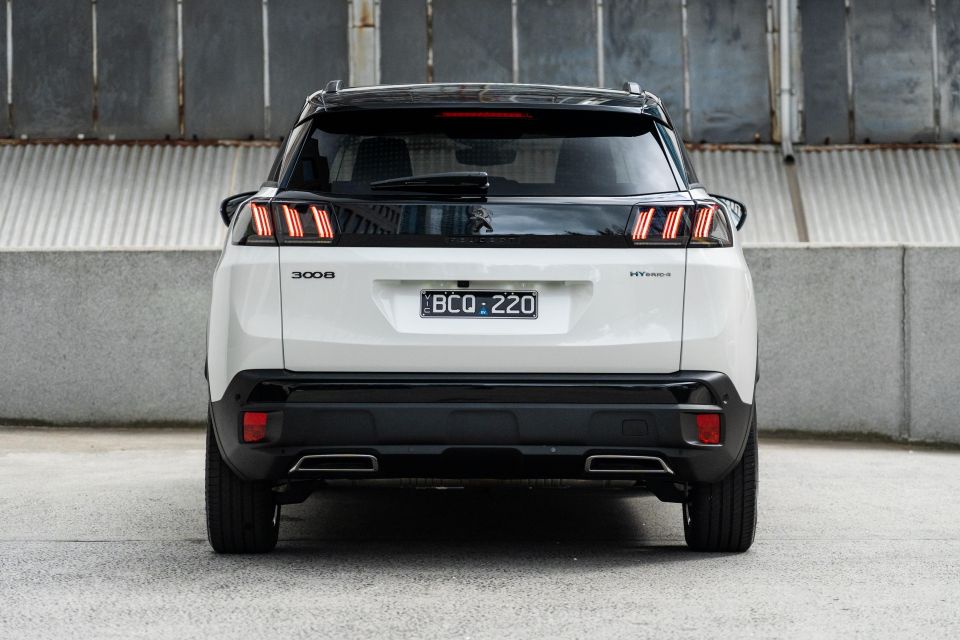
With light steering and decent all-round vision, the 3008 is well suited to life in the city. The little steering wheel and quick steering mean you can dart around corners without taking your hands from nine-and-three, and the relatively compact exterior dimensions make this one of the easiest mid-sized SUVs to park in tight underground garages.
It’s lost the light, agile feeling present in the petrol-only GT Sport in the corners, once again due to its weight gain. In this case, most owners won’t really notice. This isn’t a sports car, after all.
Although some models miss out on the full suite of active driver assists, the GT Sport has adaptive cruise with active lane-centring. It goes a step further than lane-keeping assist by applying steering to keep you between the white lines when cruise is active, and it generally does a good job of it.
Once you’ve worked out the little cruise control pod behind the two-spoke steering wheel, the active driver assists in the 3008 are some of the better-calibrated systems out there.

Like the wider range, it’s backed by a five-year, unlimited-kilometre warranty, and includes five years of roadside assist.
The 3008 PHEV requires maintenance every 12 months or 20,000 kilometres, whichever comes first.
It’s the most expensive 3008 to service, with a combined cost of $3109 over the first five years using Peugeot’s capped-price service program.

The 3008 PHEV is a good car, but it’s not good enough to justify its price tag.
It’s nice to drive, but the ride is compromised by the weight of the batteries. It’s smooth and quiet in electric mode, but it’s not as smooth or quiet as the proper electric cars it goes head-to-head with on price.
Peugeot’s unique brand of luxury is appealing, but its interior technology just isn’t up to scratch.
There are use cases for the PHEV. Not everyone is ready to go fully electric, and the blend of petrol and battery power on offer in the 3008 can act as a stepping stone between the worlds of internal-combustion and electricity.
For most though, it’s likely to remain an expensive curiosity best admired from afar.
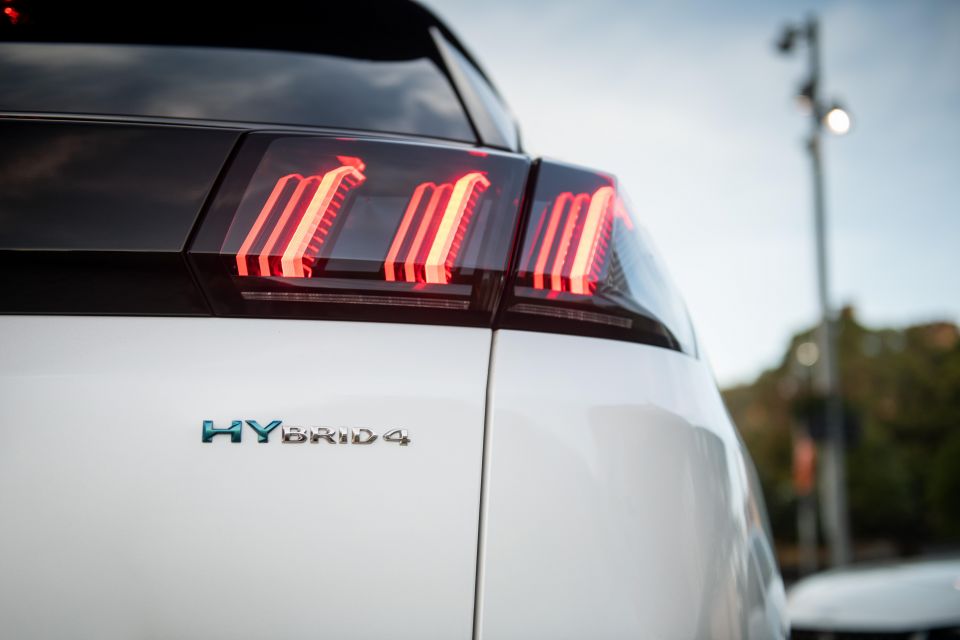
Click the images for the full gallery
MORE: Everything Peugeot 3008
Where expert car reviews meet expert car buying – CarExpert gives you trusted advice, personalised service and real savings on your next new car.
Scott Collie is an automotive journalist based in Melbourne, Australia. Scott studied journalism at RMIT University and, after a lifelong obsession with everything automotive, started covering the car industry shortly afterwards. He has a passion for travel, and is an avid Melbourne Demons supporter.


Max Davies
2 Hours Ago


William Stopford
18 Hours Ago


Ben Zachariah
19 Hours Ago


Derek Fung
20 Hours Ago


Matt Campbell
1 Day Ago


William Stopford
2 Days Ago